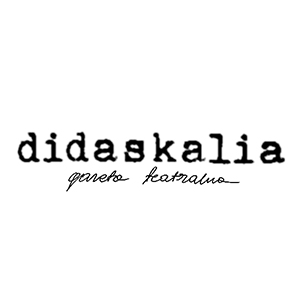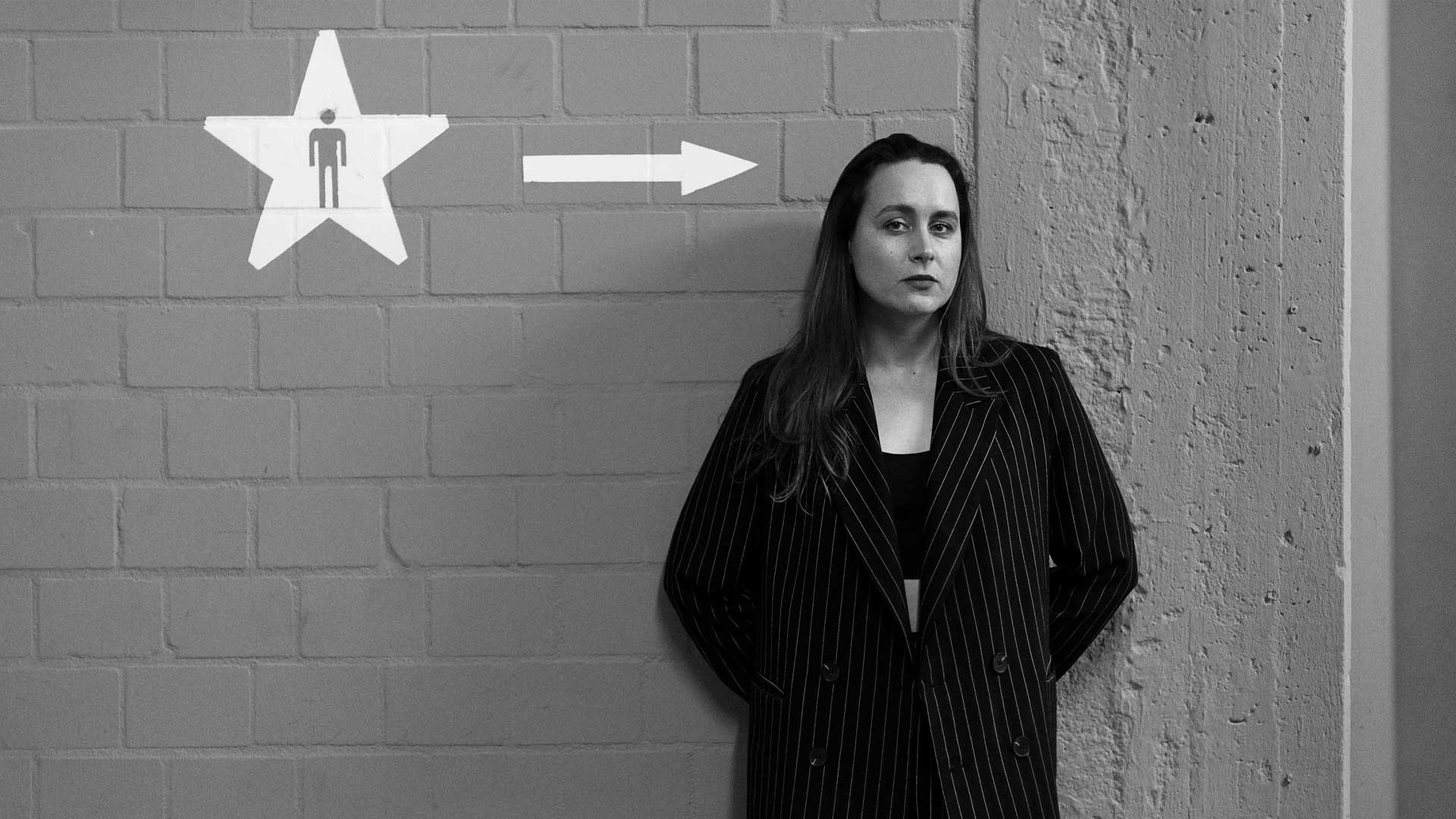
PHYSICALITY, IDENTITY
ARTYSTKA HYBRYDYCZNA
JULIA HOCZYK, Didaskalia 1/2012 English Issue
PHYSICALITY, IDENTITY, OR:
FIVE YEARS OF SOLO PROJECT
The Body

Photo: Dominik Więcek
(excerpt from the article)
The subject of physicality was tackled by the first residents, beginning with Anita Wach, through Dominika Knapik and Konrad Szymański (due to injury replaced by Aleksandra Borys – subsequent winner in 2010). Although Wach is today known as a co-choreographer of performances in Bretoncaffe Theater, a participant in many interdisciplinary projects (some involving improvisation), and as an outstanding dance and Astanga yoga instructor, five years ago she seemed a somewhat peripheral figure. At the same time, paradoxically, her participation in Solo appeared to many as a confirmation of her capabilities to date, setting the bar quite high for the residents to follow. Solo Project did not have a great impact on her situation: Wach still works with Bretoncaffe, each of her performances confirm her creative potential, and she takes part in projects. Inch 1.5 was based on a Process-Oriented- Psychology method, toward which Bretoncaffe had been moving a year and a half previously. We might say that both sides benefited from this collaboration – the artist was inspired by a new work method and the ensemble grasped the influence of the method on the choreographer. This is abundantly visible in Bretoncaffe’s following performances – Dancing Sara Kane, Topinambur and I, Agaue. But to return to Inch 1.5 – the artist seems to deconstruct the body during the performance. The phenomenal body of the dancer and its morphology – long, very slender digits and a highly visible bone structure – are fundamental here. Thus the body transforms into what is adiscursive and amorphous (close to Lacan’s category of the Real) – the original body before crossing into the symbolic order, before being inscribed in the binary gender opposition; it crumbles into sections and fragments that destabilize its fixed image. A lack of coherence, parceled gestures that threaten the integrity of the body as an imago, a representation supporting the cultural order, and moreover, of the dancing body, making predictable movements based on the idea of flow. Paradoxically, however, energy is released in grasping for taboos – in culture, dance (Polish dance in particular), and society – for the undeniable foundation of raw physicality, and in tackling, according to the principles of process-based work, an individual threshold, to spark an ecstatic dance, a flow from the depths and dusk of the body.
Dominika Knapik, a 2007 resident, put forward another sort of movement and a radically different tone. Instead of an introverted process witnessed by the viewer – an ostentatious revealing of how movement is made, how gesture by gesture it is built before the viewer’s eyes – the viewer is joined to the dancer’s actions through her gaze and stage presence, generating no extraneous meanings, but a self-affirming presentation. Knapik’s dance begins with simple gestures and movements, from which a score that resembles a warm-up gradually emerges. This resemblance comes from the fact that it aspires to no concrete situation, though it is most certainly a kind of construction. A single movement is repeated, becoming a part of the choreography. The repetition constructs the dance, in which the artist appears to play with movement and her own body. She treats the body as a plaything or mechanism, thus alienating it. She investigates its capabilities to move and bend, the motion of the joints, she comes to know herself as a body, and herself through the body.
Her performance oscillates between an objective treatment of the body, which (paradoxically) becomes what defines subjectivity. How Do You Like Me? thus becomes the statement of a subject using the body as the only reality available to the individual; something private, though observed, and thus caught up in socio-cultural discourses. Sometimes, perhaps, you don’t need to begin with the discourses themselves, in order to shape an individual code of movement and a dancing subject. The question is: Is it the body’s imagination, or the body itself, a self-contained existence revealing itself? Knapik’s solo moves from the body (perhaps part of the Real, though we cannot be sure) to creating an image of the body, which becomes a medium in the symbolic realm, i.e. in the socio-cultural sphere. This is why even the anti-aesthetic floor sequence, in which the dancer pulls her T-shirt over her face and head, baring her abdomen, does not obscure the individuality which is being built during the entire performance. It is no accident that Knapik, an actress and dancer by education (previously linked to the Hoplaaa Group), decided on a form combining a public self-analysis of the body and its performative (or self-performing) constitution. Her solo was the first experiment of its sort, and led to her later taking part in Nothing by the Gimnastyczne Association, which resembled How Do You Like Me? in its conscious play on the process of semiosis and the attempt to collapse it. At the same time, she joined Wojtek Klimczyk in founding Harakiri Farmers and began to work as an independent dancer and choreographer. Knapik and Klimczyk work with other artists, often introducing discourses from outside the realm of dance; these include contemporary literature (Keret directed by Szymon Kaczmarek), comments upon Bauman’s fluid reality combining free inspirations from Beckett (We are oh so Lucky directed by Ana Brzezińska). In Knapik’s explorations, physicality has given way to a field of discourse; this does not mean, however, that it ceases to exist. Its existence is not dance-like, but more theater-like, focused on individual gestures, condensed in overstated and very conscious movements, styles, and plays on form.
In a statement I requested from Knapik, she wrote that after years of indecision and chance experiences: “I needed to make a strong artistic decision. And I took the subject of the ‘body’. No ornament, a dance that combined lessons, contemporary dance and ‘acting’.” The chance to focus on a single topic for a month, far from Krakow, in a place entirely new to me and under the watchful eye of Wojtek Klimczyk, who kept asking me ‘Why?’,” was a breakthrough experience. I think that participating in Solo Project gave me some real impetus, it allowed me to emerge as an independent dancer on the Polish dance scene (my solo was shown at the Malta Festival, in Bytom, Kalisz, Wrocław, at the Platform in 2007, in the Hague, New York, and in Budapest).”
Photo: Dominik Więcek